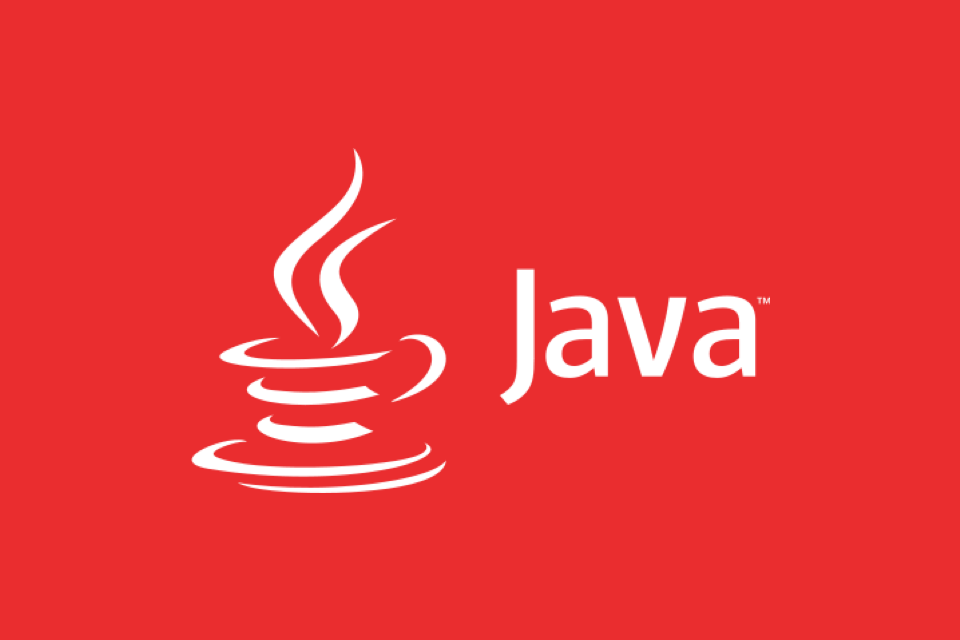Optimizing Java Application Deployment on Kubernetes
Deploying Java applications on Kubernetes requires optimization of JVM parameters, image building, health checking and scaling strategies. 1. Adjust the JVM parameters to adapt to the container environment, enable UseContainerSupport and set the heap size reasonably; 2. Optimize the image construction process, adopt multi-stage construction and lightweight basic images; 3. Properly configure Readiness/Liveness Probe to avoid false restarts due to slow startup; 4. Use HP to achieve automatic scaling based on CPU or custom metrics, and set appropriate replicas and indicator thresholds.

Deploying Java applications to Kubernetes seems simple, but to truly run steadily, save resources, and expand and scale in time, it is not just about throwing the mirror on it. Java's JVM features, memory management mechanism and startup time are a bit different from traditional microservices. If you are not careful, you will have performance problems or waste of resources.

The following points are the more critical optimization directions in actual operation.
Adjust JVM parameters to suit container environment
Java applications running on Kubernetes are usually run in containers, and the default JVM parameters are not always suitable for such restricted environments. For example, by default, the JVM allocates the heap size based on the host's CPU and memory, rather than the container limit, which may cause OOM (Out of Memory) to be killed.

Suggested practices:
- Use
-XX: UseContainerSupport(JDK8u191 and JDK11 are enabled by default) - Set a reasonable heap size, for example
-Xmsand-Xmxare set to the same value to avoid performance fluctuations caused by dynamic adjustments - Avoid setting up too large heaps, otherwise it will affect GC efficiency and Pod startup time
- You can add
-XX: PrintFlagsFinalto confirm the final effective parameters
For example, if the memory limit is set to 2Gi in Deployment, then the JVM heap is generally controlled at 1.2~1.5Gi, leaving space for non-heap areas and systems to use.

Optimize the image construction process, reduce volume and improve construction efficiency
If the image of Java applications is not done well, it will often become bloated and difficult to maintain. For example, directly packaging the entire project into a mirror, or using too large a basic image will affect the deployment efficiency.
Practical suggestions include:
- Using multi-stage build, first compile the application during the build stage, and then copy it to the streamlined runtime image
- Use lightweight basic images, such as
eclipse-temurin:8-jdk-alpineor more modern distributions - Package dependency packages and applications separately to facilitate cache reuse (such as lib is separately formed into a layer when Maven is built)
A typical optimized Dockerfile structure is as follows:
FROM maven:3.8.4-jdk-11 as builder COPY . /app WORKDIR /app RUN mvn clean package FROM eclipse-temurin:11-jre-alpine COPY --from=builder /app/target/app.jar /app.jar ENTRYPOINT ["java", "-jar", "/app.jar"]
The image built in this way is small in size and is easier to perform version management and security scanning.
Reasonably configure health checks and probes (Readiness/Liveness Probe)
Slow Java application startup is a common problem, especially in frameworks like Spring Boot, cold startup may take several seconds or even dozens of seconds. If the probe is not set properly at this time, it is easy to cause it to be restarted as soon as it is started, forming a "start-fail-restart" dead loop.
Configuration suggestions:
- ReadinessProbe is used to determine whether to join traffic, and can appropriately extend
initialDelaySecondsandfailureThreshold - LivenessProbe is used to decide whether to restart the container. It is recommended to set it more relaxed than readiness.
- Avoid the probe path being too complex (such as triggering database queries), otherwise it is easy to misjudgment
Sample configuration snippet:
livenessProbe:
httpGet:
path: /actuator/health
port: 8080
initialDelaySeconds: 60
periodSeconds: 10
readinessProbe:
httpGet:
path: /actuator/info
port: 8080
initialDelaySeconds: 30
periodSeconds: 5Use Horizontal Pod Autoscaler (HPA) appropriately
Although Java applications are not as fast as Node.js, they can still achieve automatic scaling through HPA when the load increases. However, it should be noted that the cold start time of Java applications is long, so the scaling strategy cannot be too radical.
Recommended settings:
- Scaling based on CPU or custom metrics (such as request delay, queue length)
- Set the appropriate minimum number of replicas to avoid frequent creation of new pods
- If you use the metrics server of a cloud vendor, remember to install and verify availability in advance
For example:
apiVersion: autoscaling/v2beta2
kind: HorizontalPodAutoscaler
metadata:
name: java-app-hpa
spec:
scaleTargetRef:
apiVersion: apps/v1
kind: Deployment
name: java-app
minReplicas: 2
maxReplicas: 10
metrics:
- type: Resource
resource:
name: cpu
target:
type: Utilization
averageUtilization: 70Basically that's it. The key to deploying and optimizing Java applications on Kubernetes is to understand its operating characteristics and adapt it with the platform's capabilities. It's not difficult to say, but if you don't pay attention to many details, it's easy to get stuck.
The above is the detailed content of Optimizing Java Application Deployment on Kubernetes. For more information, please follow other related articles on the PHP Chinese website!

Hot AI Tools

Undress AI Tool
Undress images for free

Undresser.AI Undress
AI-powered app for creating realistic nude photos

AI Clothes Remover
Online AI tool for removing clothes from photos.

Clothoff.io
AI clothes remover

Video Face Swap
Swap faces in any video effortlessly with our completely free AI face swap tool!

Hot Article

Hot Tools

Notepad++7.3.1
Easy-to-use and free code editor

SublimeText3 Chinese version
Chinese version, very easy to use

Zend Studio 13.0.1
Powerful PHP integrated development environment

Dreamweaver CS6
Visual web development tools

SublimeText3 Mac version
God-level code editing software (SublimeText3)

Hot Topics
 What is the `enum` type in Java?
Jul 02, 2025 am 01:31 AM
What is the `enum` type in Java?
Jul 02, 2025 am 01:31 AM
Enums in Java are special classes that represent fixed number of constant values. 1. Use the enum keyword definition; 2. Each enum value is a public static final instance of the enum type; 3. It can include fields, constructors and methods to add behavior to each constant; 4. It can be used in switch statements, supports direct comparison, and provides built-in methods such as name(), ordinal(), values() and valueOf(); 5. Enumeration can improve the type safety, readability and flexibility of the code, and is suitable for limited collection scenarios such as status codes, colors or week.
 What is the interface segregation principle?
Jul 02, 2025 am 01:24 AM
What is the interface segregation principle?
Jul 02, 2025 am 01:24 AM
Interface Isolation Principle (ISP) requires that clients not rely on unused interfaces. The core is to replace large and complete interfaces with multiple small and refined interfaces. Violations of this principle include: an unimplemented exception was thrown when the class implements an interface, a large number of invalid methods are implemented, and irrelevant functions are forcibly classified into the same interface. Application methods include: dividing interfaces according to common methods, using split interfaces according to clients, and using combinations instead of multi-interface implementations if necessary. For example, split the Machine interfaces containing printing, scanning, and fax methods into Printer, Scanner, and FaxMachine. Rules can be relaxed appropriately when using all methods on small projects or all clients.
 Asynchronous Programming Techniques in Modern Java
Jul 07, 2025 am 02:24 AM
Asynchronous Programming Techniques in Modern Java
Jul 07, 2025 am 02:24 AM
Java supports asynchronous programming including the use of CompletableFuture, responsive streams (such as ProjectReactor), and virtual threads in Java19. 1.CompletableFuture improves code readability and maintenance through chain calls, and supports task orchestration and exception handling; 2. ProjectReactor provides Mono and Flux types to implement responsive programming, with backpressure mechanism and rich operators; 3. Virtual threads reduce concurrency costs, are suitable for I/O-intensive tasks, and are lighter and easier to expand than traditional platform threads. Each method has applicable scenarios, and appropriate tools should be selected according to your needs and mixed models should be avoided to maintain simplicity
 Differences Between Callable and Runnable in Java
Jul 04, 2025 am 02:50 AM
Differences Between Callable and Runnable in Java
Jul 04, 2025 am 02:50 AM
There are three main differences between Callable and Runnable in Java. First, the callable method can return the result, suitable for tasks that need to return values, such as Callable; while the run() method of Runnable has no return value, suitable for tasks that do not need to return, such as logging. Second, Callable allows to throw checked exceptions to facilitate error transmission; while Runnable must handle exceptions internally. Third, Runnable can be directly passed to Thread or ExecutorService, while Callable can only be submitted to ExecutorService and returns the Future object to
 Best Practices for Using Enums in Java
Jul 07, 2025 am 02:35 AM
Best Practices for Using Enums in Java
Jul 07, 2025 am 02:35 AM
In Java, enums are suitable for representing fixed constant sets. Best practices include: 1. Use enum to represent fixed state or options to improve type safety and readability; 2. Add properties and methods to enums to enhance flexibility, such as defining fields, constructors, helper methods, etc.; 3. Use EnumMap and EnumSet to improve performance and type safety because they are more efficient based on arrays; 4. Avoid abuse of enums, such as dynamic values, frequent changes or complex logic scenarios, which should be replaced by other methods. Correct use of enum can improve code quality and reduce errors, but you need to pay attention to its applicable boundaries.
 Understanding Java NIO and Its Advantages
Jul 08, 2025 am 02:55 AM
Understanding Java NIO and Its Advantages
Jul 08, 2025 am 02:55 AM
JavaNIO is a new IOAPI introduced by Java 1.4. 1) is aimed at buffers and channels, 2) contains Buffer, Channel and Selector core components, 3) supports non-blocking mode, and 4) handles concurrent connections more efficiently than traditional IO. Its advantages are reflected in: 1) Non-blocking IO reduces thread overhead, 2) Buffer improves data transmission efficiency, 3) Selector realizes multiplexing, and 4) Memory mapping speeds up file reading and writing. Note when using: 1) The flip/clear operation of the Buffer is easy to be confused, 2) Incomplete data needs to be processed manually without blocking, 3) Selector registration must be canceled in time, 4) NIO is not suitable for all scenarios.
 Exploring Different Synchronization Mechanisms in Java
Jul 04, 2025 am 02:53 AM
Exploring Different Synchronization Mechanisms in Java
Jul 04, 2025 am 02:53 AM
Javaprovidesmultiplesynchronizationtoolsforthreadsafety.1.synchronizedblocksensuremutualexclusionbylockingmethodsorspecificcodesections.2.ReentrantLockoffersadvancedcontrol,includingtryLockandfairnesspolicies.3.Conditionvariablesallowthreadstowaitfor
 How Java ClassLoaders Work Internally
Jul 06, 2025 am 02:53 AM
How Java ClassLoaders Work Internally
Jul 06, 2025 am 02:53 AM
Java's class loading mechanism is implemented through ClassLoader, and its core workflow is divided into three stages: loading, linking and initialization. During the loading phase, ClassLoader dynamically reads the bytecode of the class and creates Class objects; links include verifying the correctness of the class, allocating memory to static variables, and parsing symbol references; initialization performs static code blocks and static variable assignments. Class loading adopts the parent delegation model, and prioritizes the parent class loader to find classes, and try Bootstrap, Extension, and ApplicationClassLoader in turn to ensure that the core class library is safe and avoids duplicate loading. Developers can customize ClassLoader, such as URLClassL







